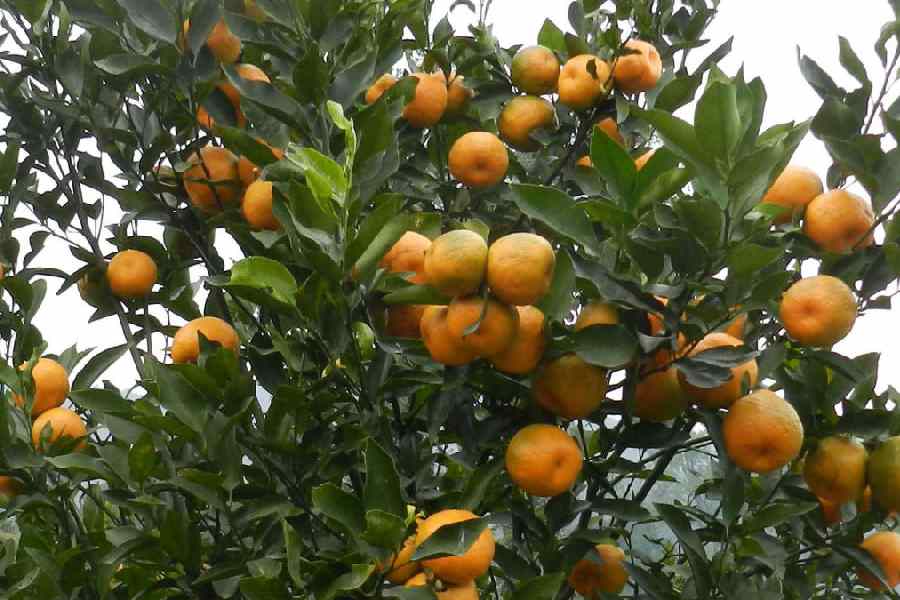The production of famous Darjeeling oranges is expected to be “steady” this winter with the department of food processing industries and horticulture drawing up plans to make value-added products from fruits which drop from trees before they become ripe.
Debaji Basak, the Darjeeling district food processing and horticulture officer, said: “Field reports suggest the orange yield will be steady this winter after a rapid decline in the production over the past decade. We are now exploring the possibility of setting up fruit processing units in the hills.”
Officials of the department said they had noticed that almost 40 per cent of the fruit fell before they ripened.
“Our department wants to target this 40 per cent of the fruit. We are exploring the possibilities of setting up small units in the hills and simultaneously approaching big business houses and trade bodies to exploit the potential of the famous Darjeeling oranges,” said an official.
Juice, jam, jelly and marmalade are some value-added products that can be processed from oranges.
The Darjeeling oranges, though smaller in size, are considered superior to the Nagpur variety because they are more sweet, juicy and succulent.
However, the production had been declining in the hills as orange orchards were reeling from an assault of the citrus tristeza virus, greening (fungal infections), trunk borer disease and an attack by fruit flies.
Poor farming practices have also been blamed for the low yield.
According to sources in the department, the hills produced around 39 metric tonnes of oranges last winter.
“The figure is expected to remain the same. A few years ago, the production had dropped to almost 29 metric tonnes,” said a source.
Around 52 metric tonnes of oranges used to be harvested in the hills when the production was at its peak.
The Bengal horticulture department is also taking initiatives to increase orange cultivation in the hills. The department has distributed around 45,000 saplings to orange growers and provided expertise to them so that they can revive the fertility of their land.
Oranges are grown over an area of 4,150 hectares in the hills.
